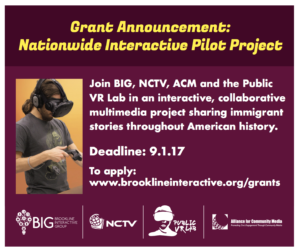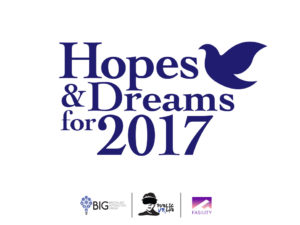Collaborative Immigration Project: Deadline extended to 9/18/2017
We’re building a national collaboration project around 360 filmmaking, immersive journalism, and community storytelling. You’re invited to apply to join our team, and we’ve extended the deadline to help more folks apply to the project.
Join our cohort to learn, share, and create a 360/VR documentary project on “Re-imaging Migration” together over the next year, as well as a create traditional media content for our local, regional and national networks. We’ll even have an app, and insights throughout the project experts on immigration messaging, history of migration in America, and on interviewing techniques.
To Apply:
Please email info@brooklineinteractive.org with the following information:
- Contact info for applicants
- A description of your work and your organization (media center, news outlet, library, arts org, etc)
- Your interest in 360 video and immigration stories in your community
- Capacity: Describe the technical skills and interest of your team, storytelling, and journalism, as well as describing the immigration stories that you feel need to be shared from your community.
- Describe a current collaboration you participate in and your experience in it. Why do you wish to collaborate with our project? What can you offer your cohort co-members?
- Do you currently own any camera equipment? Any 360 equipment?
- How able are you to meet monthly on a call with the cohort?
- Application date is now September 18th, 2017 at midnight
We’ll begin our work together in late October/early November and it will continue through the summer of 2018.
Requirements: Team collaborative calls monthly to share successes, challenges, and opportunities, webinars (optional), and training/tips on 360 filmmaking.
We’ll provide a 360 camera, an ambisonic microphone, training on 360 filmmaking, and on VR/AR technologies, and immigration interviewing techniques, and other topics and coordinate editing and submission of the final piece to film festivals as well as promote the work of the collaborative, locally, regionally and nationally.
We hope to together create a template for a strong immersive news/content sharing network, engaged communities, training programs, and collaborative, community-based VR projects.
We hope that we’ll find some best practices for how to work together as a national cohort group, developing our methods, techniques, strategies, funding, and distribution to create social impact in the area of immersive, empathetic immigration stories.





